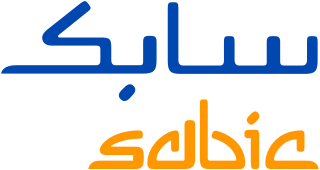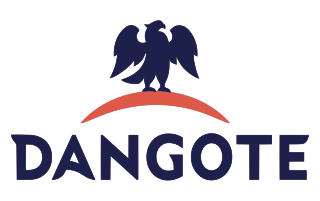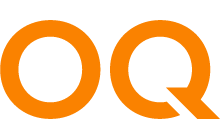
The economy of the Dominican Republic is the seventh largest in Latin America, and is the largest in the Caribbean and Central American region. The Dominican Republic is an upper-middle income developing country with important sectors including mining, tourism, manufacturing, energy, real estate, infrastructure, telecommunications and agriculture. The Dominican Republic is on track to achieve its goal of becoming a high-income country by 2030, and is expected to grow 79% in this decade. The country is the site of the single largest gold mine in Latin America, the Pueblo Viejo mine.Although the service sector is currently the leading employer of Dominicans, agriculture remains an important sector in terms of the domestic market and is in second place in terms of export earnings. Tourism accounts for more than $7.4 billion in annual earnings in 2019. Free-trade zone earnings and tourism are the fastest-growing export sectors. A leading growth engine in the Free-trade zone sector is the production of medical equipment for export having a value-added per employee of $20,000 USD, total revenue of $1.5 billion USD, and a growth rate of 7.7% in 2019. The medical instrument export sector represents one of the highest-value added sectors of the country's economy, a true growth engine for the country's emerging market. Remittances are an important sector of the economy, contributing $8.2 billion in 2020. Most of these funds are used to cover household expenses, such as housing, food, clothing, health care and education. Secondarily, remittances have financed businesses and productive activities. Thirdly, this combined effect has induced investment by the private sector and helps fund the public sector through its value-added tax. The combined import market including the free-trade-zones amounts to a market of $20 billion a year in 2019. The combined export sector had revenues totaling $11 billion in 2019. The consumer market is equivalent to $61 billion in 2019. An important indicator is the average commercial loan interest rate, which directs short-term investment and stimulates long-term investment in the economy. It is currently 8.30%, as of June 2021.

The economy of Kyrgyzstan is heavily dependent on the agricultural sector. Cotton, tobacco, wool, and meat are the main agricultural products, although only tobacco and cotton are exported in any quantity. According to Healy Consultants, Kyrgyzstan's economy relies heavily on the strength of industrial exports, with plentiful reserves of gold, mercury and uranium. The economy also relies heavily on remittances from foreign workers. Following independence, Kyrgyzstan was progressive in carrying out market reforms, such as an improved regulatory system and land reform. In 1998, Kyrgyzstan was the first Commonwealth of Independent States (CIS) country to be accepted into the World Trade Organization. Much of the government's stock in enterprises has been sold. Kyrgyzstan's economic performance has been hindered by widespread corruption, low foreign investment and general regional instability. Despite those issues, Kyrgyzstan is ranked 70th on the ease of doing business index.

The economy of Paraguay is a market economy that is highly dependent on agriculture products. In recent years, Paraguay's economy has grown as a result of increased agricultural exports, especially soybeans. Paraguay has the economic advantages of a young population and vast hydroelectric power. Its disadvantages include the few available mineral resources, and political instability. The government welcomes foreign investment.

Potash includes various mined and manufactured salts that contain potassium in water-soluble form. The name derives from pot ash, plant ashes or wood ash soaked in water in a pot, the primary means of manufacturing potash before the Industrial Era. The word potassium is derived from potash.

The chemical industry comprises the companies that produce industrial chemicals. Central to the modern world economy, it converts raw materials into more than 70,000 different products. The plastics industry contains some overlap, as some chemical companies produce plastics as well as chemicals.

SK Group is the second largest South Korean chaebol behind Samsung Group. SK Group is composed of 186 subsidiaries and affiliates that share the SK brand name and the group's management culture, named SKMS. It changed its name from Sunkyong Group to SK Group in 1998. The group is controlled by estate of Chey Tae-won through a holding company SK Inc. The cornerstone of SK Group is its energy and chemicals division.

Saudi Basic Industries Corporation, known as SABIC, is a Saudi chemical manufacturing company. 70% of SABIC's shares are owned by Saudi Aramco. It is active in petrochemicals, chemicals, industrial polymers, fertilizers, and metals. It is the second largest public company in the Middle East and Saudi Arabia as listed in Tadawul.

Indian Farmers Fertiliser Cooperative Limited, also known as IFFCO, is a multi-state cooperative society. IFFCO is wholly owned by Cooperative Societies of India. The society is engaged in the business of manufacturing and marketing of fertilizers. IFFCO is headquartered in New Delhi, India. Started in 1967 with 57 member cooperatives, it is today the biggest co-op in the world by turnover on GDP per capita, with around 35,000 member cooperatives reaching over 50 million Indian farmers.

Hindustan Petroleum Corporation Limited (HPCL) is an Indian oil and gas refining company headquartered in Mumbai. Since 2018, ONGC has owned a majority stake in the company. The company is ranked 367th on the Fortune Global 500 list of the world's biggest corporations as of 2016. On 24 October 2019, the company became a Maharatna PSU.
The technological and industrial history of China is extremely varied, and extensive. China's industrial sector has shown great progress using most of its technology from the 1950s.
Trade is a key factor of the economy of China. In the three decades following the formation of the Communist Chinese state in 1949, China's trade institutions at first developed into a partially modern but somewhat inefficient system. The drive to modernize the economy that began in 1978 required a sharp acceleration in commodity flows and greatly improved efficiency in economic transactions. In the ensuing years economic reforms were adopted by the government to develop a socialist market economy. This type of economy combined central planning with market mechanisms. The changes resulted in the decentralization and expansion of domestic and foreign trade institutions, as well as a greatly enlarged role for free market in the distribution of goods, and a prominent role for foreign trade and investment in economic development.

Industry was 39.9% of China's gross domestic product (GDP) in 2017. In 2007, industry contributed 46.7 percent of GDP in 2010 and occupied 27 percent of the workforce. In 2015, the manufacturing industrial sectors contributed to 40% of China's GDP. The manufacturing sector produced 44.1 percent of GDP in 2004 and accounted for 11.3 percent of total employment in 2006.

Sinochem Corporation is a Chinese state-owned multinational conglomerate primarily engaged in the production and trading of chemicals and fertilizer and exploration and production of oil for civilian and military purposes. Its majority owned fertilizer subsidiary Sinofert is involved throughout the chain from production of the product and procurement on international markets to distribution and retail.
Pakistan's industrial sector accounts for 28.11% of the GDP. Of this, manufacturing makes up 12.52%, mining constitutes 2.18%, construction makes up 2.05%, and electricity and gas 1.36%. The majority of industry is made up of textile units, with textiles contributing $15.4b to exports, making up 56% of total exports. Other units include surgical instruments, chemicals, and a budding automotive industry.

The Dangote Group is a Nigerian multinational industrial conglomerate, founded by Aliko Dangote. It is the largest conglomerate in West Africa and one of the largest on the African continent. The group employs more than 30,000 people, generating revenue in excess of US$4.1 billion in 2017.

The Jordan Design and Development Bureau (JODDB) is a Jordanian defence company. that was established by Royal Decree on 24 August 1999 to provide an indigenous capability for the supply of scientific and technical services to the Jordanian Armed Forces (JAF). JODDB was also created for the supply of defense and commercial equipment optimized for Middle East requirements. It is an independent agency within the Jordanian Armed Forces tasked with operating according to best business practices and is financed both through the defense budget and by technology, products and services sales incomes.

Engro Corporation (Engro), is a conglomerate headquartered in Karachi.

OQ, formerly known as Oman Oil Company, is an energy investment company headquartered in Muscat, Oman. It is a wholly owned subsidiary of the Government of Oman through the Oman Investment Authority.
Behran Oil Company is an oil refining company with headquarters in Tehran. Its products are exported to more than 40 countries.

Industry plays an important role in the economy of Belarus. In 2020, industry accounted for 25.5% of Belarusian GDP. Share of manufacturing in Belarusian GDP was 21.3% in 2019. United Nations Economic Commission for Europe described Belarus as having "a well-developed industrial sector and highly skilled workforce". In 2020, 23.5% of Belarusian workforce was employed in industry. In 2019, total industrial production amounted to 115.7 billion Belarusian rubels ; in 2020, it rose to Rbls 116.5 billion. Belarusian industry is export-oriented: in 2020, 61.2% of industrial output was exported. The most important sector is food industry. Other well-developed sectors of industry include chemical industry, automotive industry and manufacturing of other machinery equipment.

















